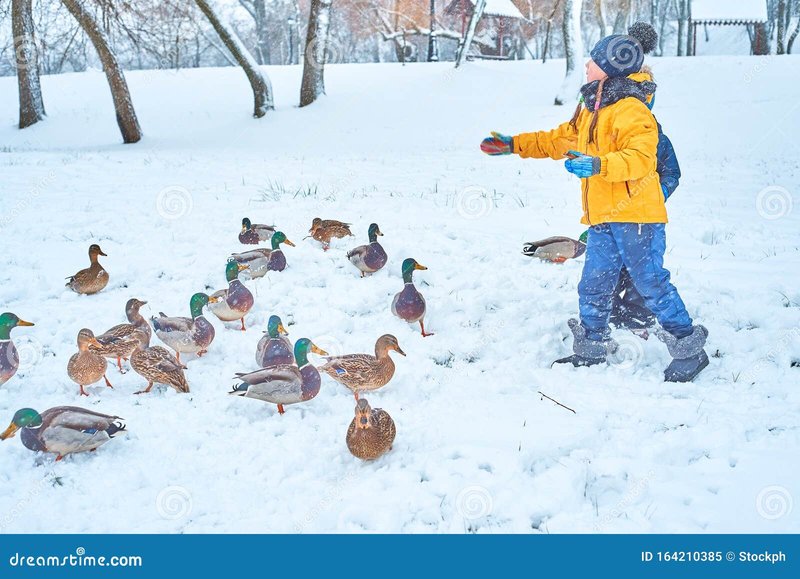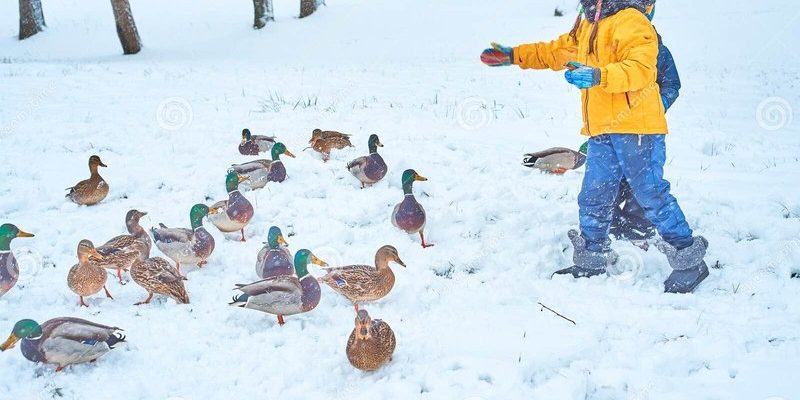
You might be wondering what ducks enjoy munching on when the ponds are frozen and the snow starts to pile up. Well, it’s not simply bread crumbs tossed on the ice. That could do much more harm than good! So, grab a warm drink, sit back, and let’s dive into what to feed ducks in winter to keep them warm and well-fed.
Understanding Duck Diets
Ducks are omnivores, which means they eat a variety of foods, from plants to small animals. In warmer months, they feast on things like insects, snails, and aquatic plants. However, in winter, when their food sources are limited, ducks need some extra care. They rely heavily on what people provide for them. You might think of ducks as little foragers, always searching for snacks, and during winter, you can help fill their plates.
It’s also important to remember that what ducks eat can affect their health. Feeding them the wrong foods, especially during winter, can lead to nutritional deficiencies. Think of it like trying to survive a winter on candy alone—sounds fun until your body starts to complain. So, what should you be serving these lovely quackers?
Ideal Winter Foods for Ducks
When the temperatures drop, it’s best to focus on nutritious options. Here are some top choices for feeding ducks in winter:
- Duck pellets: Specialized duck food is designed to meet their nutritional needs. It usually contains the right balance of protein, vitamins, and minerals.
- Vegetables: Leafy greens like kale and lettuce are great options. Ducks love munching on crunchy vegetables, and they provide essential nutrients.
- Grains: Corn, oats, and barley are excellent for energy. Ducks appreciate anything that’s easy to forage, especially when it’s cold outside.
- Seeds: Sunflower seeds or mixed birdseed can be a delightful treat. They’re packed with healthy fats, which help ducks stay warm.
These foods not only fill their bellies but also keep them healthy. Now, here’s the thing: while it’s tempting to throw out bread, it’s really not a good idea. Bread lacks nutritional value and can lead to issues like obesity or a condition called “angel wing,” which can deform their wings.
How to Feed Ducks Safely
Feeding ducks in winter isn’t just about what you provide; it’s also about how you do it. Here are some tips to ensure you’re feeding them appropriately and safely:
1. Choose the Right Location: Look for a stable area around a pond or a safe spot away from heavy foot traffic. Be mindful of other wildlife that could interfere.
2. Maintain Hygiene: Clean up any uneaten food to prevent attracting unwanted pests or spreading disease among the ducks. Leftover food can spoil in cold weather, too.
3. Don’t Overfeed: Just like people, ducks can become lazy if they expect food all the time. Provide food in moderation so they still engage in foraging behavior and stay active.
4. Avoid Feeding on Ice: If you’re tossing food on ice, ducks may have trouble reaching it. Instead, try to feed them near the water’s edge where they can easily access it.
Creative Feeding Ideas for Winter
Keeping things interesting for the ducks can make feeding time more engaging. Here are some creative ideas on how to mix it up:
– DIY Duck Treats: You can make a simple bird treat by mixing cornmeal with water and shaping it into small cakes. Freeze them and offer them as a chilly snack. Ducks love the challenge of breaking through ice to get to their goodies!
– Use a Feeder: A bird feeder designed for larger birds can be a fun way to keep food off the ground and dry. It helps the food last longer and gives ducks an interesting change of scenery.
– Scatter it Around: Instead of a pile, scatter food in small amounts across the area. This encourages ducks to forage naturally, which is closer to how they eat in the wild.
Common Mistakes to Avoid
As with anything, there are a few pitfalls to watch out for when feeding ducks in winter. Here are some common mistakes and how to avoid them:
- Feeding Them Bread: As mentioned earlier, bread can lead to serious health issues. Stick to the nutritious options.
- Ignoring Quality: Not all duck feed is created equally. Cheaper products may lack essential nutrients. Always check the labels.
- Feeding in Large Groups: If you see a flock, it’s tempting to feed them all at once. Keep your distance to avoid stressing the birds and only feed small groups.
The goal is to create a welcoming environment where ducks can thrive, even in the harshest winter conditions.
The Importance of Local Guidelines
Different regions have varying guidelines for feeding wildlife, including ducks. It’s crucial to check local regulations to ensure you’re not only keeping ducks healthy but also following your area’s wildlife feeding laws. Some parks or wildlife areas have specific rules regarding the types of food you can offer or may even discourage feeding them altogether.
Besides adhering to the rules, local wildlife organizations often provide excellent insights on what’s best for ducks in your area. They can guide you on seasonal changes and preferences of local duck populations.
Wrap-Up: Feeding Ducks in Winter
Feeding ducks in winter is a joyful activity that can make a significant difference in their survival during the cold months. By providing the right foods, ensuring safe practices, and avoiding common mistakes, you can contribute to the well-being of these charming birds.
Honestly, every little effort counts, and you might just find that feeding ducks becomes a delightful winter tradition. So, grab those pellets, sprinkle some seeds, and enjoy watching these quirky creatures thrive, even as the snow falls. Remember, every duck counts, especially when it’s cold outside!

